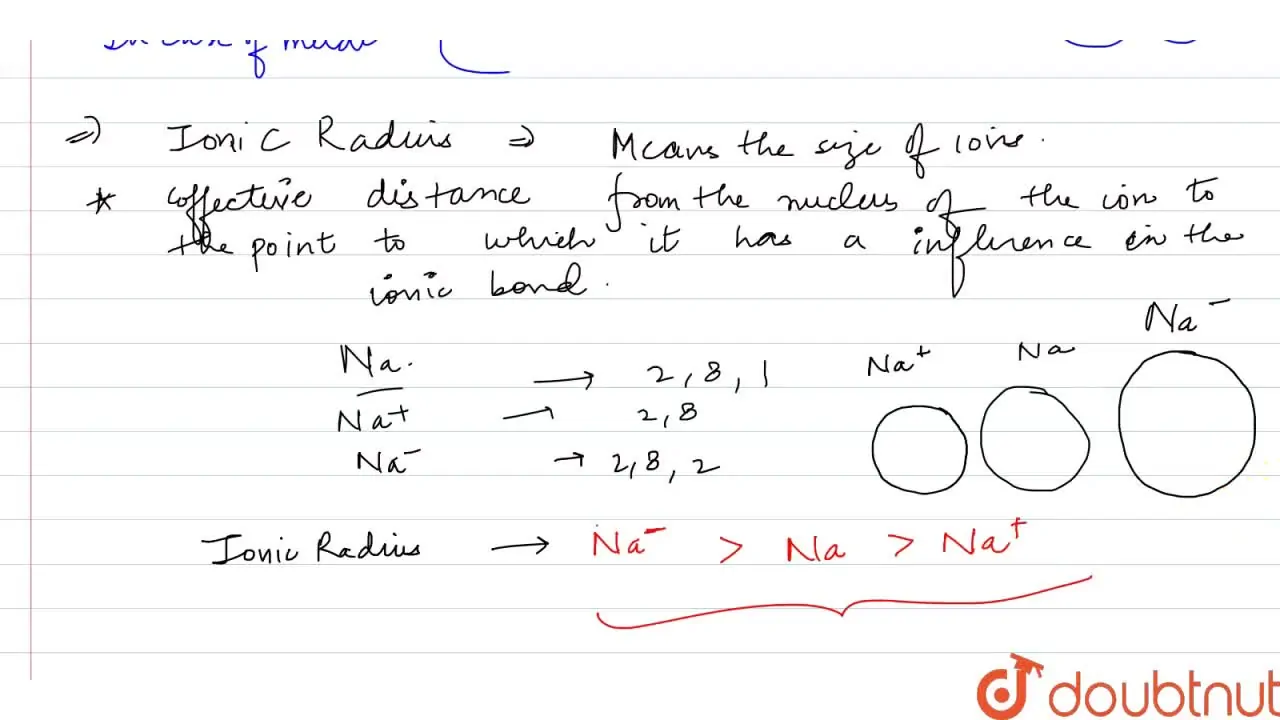What do atomic radius and ionic radius really mean to you?
Video Solution
Text Solution
Atomic radius means size of the atom. It can be measured either by or by spectroscopic methods. In case of non-metals, atomic radius is called covalent radius. It is defined as one-half the distance between the nuclei of two covalent bonded atoms of the same element in a molecule. For example, the internuclear distance between to chlorine atoms in chlorine molecule is . Therefore, the covalent radius of chlorine atom is . In case of metals, atomic radius is called metallic radius. It is defined as one-half the distance between the two adjacent atoms in the crystal lattice. For example, the distance between two adjacent copper atoms in solid copper is , therefore, the metallic radius of copper is .
Ionic radius means size of the ion. An ion can be a cation or an anion. The size of a cation is always smaller than that of the parent atom because loss of one or more electrons increases the effective nuclear charge. As a result, force of attraction increases and hence the ionic size decreases. On the other hand, the size of the anion is larger than the parent atom because the addition of one or more electrons decreases the effective nuclear charge. As a result, The force of attraction decreases and hence the ionic size increases. For example,the ionic radius of is 95 pm while the atomic radius of sodium is 186 pm. On the other hand, ionic radius of fluoride ion is whereas the atomic radius of flourine atom is only 72 pm.
|
Updated on:21/07/2023
Related Playlists
- BOOK - CENGAGE CHEMISTRYCHAPTER - APPENDIX - INORGANIC VOLUME 1EXERCISE - Exercise very short70videos
APPENDIX - INORGANIC VOLUME 1
- BOOK - CENGAGE CHEMISTRYCHAPTER - APPENDIX - INORGANIC VOLUME 1EXERCISE - Exercise Short146videos
APPENDIX - INORGANIC VOLUME 1
- BOOK - CENGAGE CHEMISTRYCHAPTER - ALKYNESEXERCISE - Exercises (Archives - Analytical and Desriptive Type)4videos
ALKYNES
- BOOK - CENGAGE CHEMISTRYCHAPTER - ATOMIC STRUCTUREEXERCISE - Concept Applicationexercise(4.3)19videos
ATOMIC STRUCTURE
Similar Questions
What do atomic radius and ionic radius really mean to you?
View SolutionWhat do you mean by antibiotic ?
View SolutionWhat do you mean by antibiotic?
View SolutionWhat do you mean by antibiotic?
View SolutionWhat do you mean by diphydont?
View SolutionWhat do you mean by reduction?
View SolutionWhat do you mean by 'Zaid'?
View SolutionWhat do you mean by data?
View SolutionWhat do you mean by haploid
View SolutionWhat do you mean by diploid
View Solution


